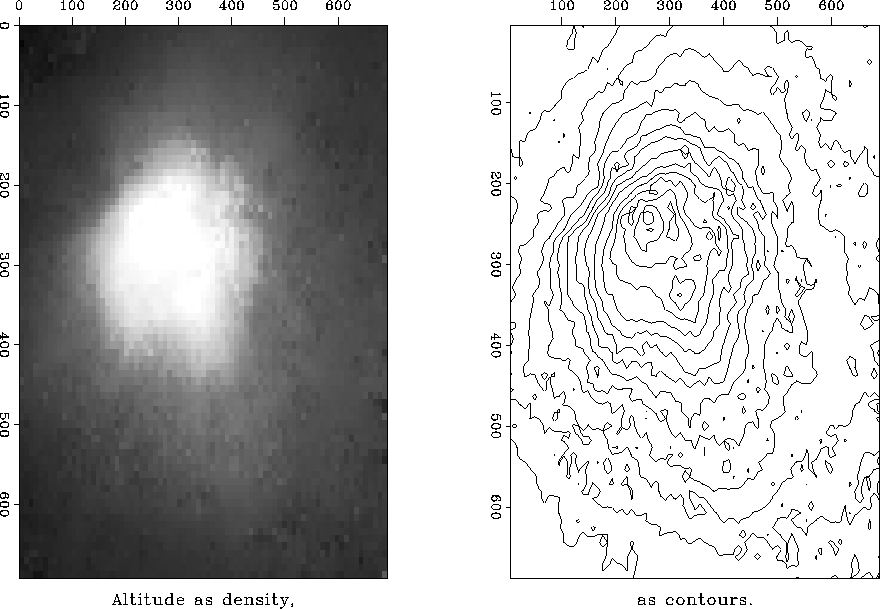 |
Figure 5 Estimated altitude.
![[*]](http://sepwww.stanford.edu/latex2html/cross_ref_motif.gif) and
invstack()
and
invstack() ![[*]](http://sepwww.stanford.edu/latex2html/cross_ref_motif.gif) .
unwrapInverse 2-D gradient
An open question is whether the required number of iterations is reasonable
or whether we would need to uncover a preconditioner
or more rapid solution method.
I adjusted the frame size
(by the amount of smoothing in Figure
.
unwrapInverse 2-D gradient
An open question is whether the required number of iterations is reasonable
or whether we would need to uncover a preconditioner
or more rapid solution method.
I adjusted the frame size
(by the amount of smoothing in Figure ![[*]](http://sepwww.stanford.edu/latex2html/cross_ref_motif.gif) )
so that I would get the solution in about ten seconds with 400 iterations.
Results are shown in
Figure
)
so that I would get the solution in about ten seconds with 400 iterations.
Results are shown in
Figure ![[*]](http://sepwww.stanford.edu/latex2html/cross_ref_motif.gif) .
.
 |
To summarize, the input is the phase map
Figure ![[*]](http://sepwww.stanford.edu/latex2html/cross_ref_motif.gif) and the output is the altitude map in
Figure
and the output is the altitude map in
Figure ![[*]](http://sepwww.stanford.edu/latex2html/cross_ref_motif.gif) .
Oddly, the input looks maybe nicer than the output
because it already looks something like a contour plot.
So if we have a beauty contest, then the input beats
the output, but if you need to have
the (normalized) altitude h(x,y),
not the phase of eih(x,y),
then you need to solve the least squares problem.
.
Oddly, the input looks maybe nicer than the output
because it already looks something like a contour plot.
So if we have a beauty contest, then the input beats
the output, but if you need to have
the (normalized) altitude h(x,y),
not the phase of eih(x,y),
then you need to solve the least squares problem.